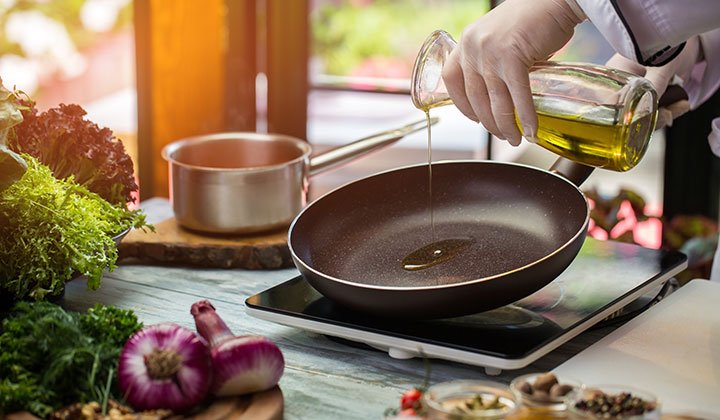Seed oils- A deep dive
You may be hearing a bit of talk around seed oils suddenly being the worst possible thing we can consume. The Dunning Krugers are out in force & the beauty of clickbait social media strikes again. This topic is often too much of a minefield for the general public to debate at length, so often, we just take information in this area at face value. Hopefully this article (along with the research backing it) provides a bit more information on the topic.
What the hell are seed oils?
Seed oils are any vegetable oil which come from the seeds of plants; think canola, linseed, sunflower. They are utilised in cooking from baking to drizzling over a salad and are some of the more common oils used alongside olive oil.
If they are commonly used, are they healthy?
As the name suggests, seeds=plants which comes with healthy unsaturated fats (mono & polyunsaturated fats). Additional to this, they can be a source of Omega 3 and Omega 6 fatty acids which helps support heart health, brain function and growth. With research consistently showing linoleic acid (an essential Omega 6 fatty acid) as lowering the risk of heart disease, the myth around seed oils causing inflammation has also been popped. Naturally, seed oils also contain no trans fats. These types of fats have been shown to have negative health effects when consistently consumed in our overall diet. Reducing trans fats and increasing our poly and monounsaturated fats is a big health tick.
Further to what’s actually in seed oils, the World Cancer Research Fund and the Cancer Council concluded that there was no evidence that eating vegetable and seed oils in moderation increased the risk of cancer. Small amounts of these types of unsaturated fats actually assist in the transportation of vitamins around our body. So with Omega 3s,6s, unsaturated fats, the potential to lower inflammation markers and no direct link to cancer, the answer to the question ‘Are they healthy?’ is yes.
Aren’t seed oils highly processed and therefor bad for our health?
This is where the information gets muddy and where much of the confusion stems. Now, some of the words used below may send off the trigger response of ‘unhealthy’ based on what you’ve heard on social media, but as we’ll unpack a little later, some foods actually need a form of processing in the name of food science to be more palatable, have a better shelf life, create better yields or actually be more stable for human consumption.
So for seeds or vegetables to produce oils, the plant is crushed and extracted with an organic solvent and deodorised (trigger words…stay with me) to create a neutral flavour and stability when cooking at a high temperature. The organic solvent used is hexane which has no evidence of human health risk from consuming trace amounts. Food products are regulated (by Food Standards Codes in Australia and New Zealand) to maintain hexane levels below a certain point of 20mg per kg. For reference, it is estimated that any residual hexane in a seed oil product is 0.8mg per kilogram. That would be 25litres of ingested seed oil before we start to see the bottom end of what is deemed safe consumption. Unsure how much seed or olive oil you’re putting on your salad but chances are you’ll well inside these margins.
It’s necessary to highlight here that some of the foods we consume actually need some level of processing. The classifications are broken down into unprocessed (think fresh fruit & veggies), minimally processed (canned foods, milk and our oils) and ultra-processed (added sugar, salt or saturated fats which usually significantly change the nutrition profile of the food itself).
What about the cooking process? Surely heating oils isn’t great.
The second part to pay attention to for cooking oils is something called a smoke point. The smoke point is when an oil reaches a temperature in which it starts to break down and release aldehydes that can be harmful to our body. This means that in theory a higher smoke point can prevent this breakdown. Before condemning any oils based on this, lets take a step back and put it into perspective. For reference, extra virgin olive oil (EVOO) has a smoke point of 190C whereas canola oil is around 205C. Most cooking methods are around if not below these temperatures meaning that for the most part, they keep their components intact. Many of the studies looking at these adverse health effects had heated the oil for hours on end (>6hours of oil in a pan). The take away from this is that if you’re cooking with seed oils (or any oils), to keep heating time to a minimum. Don’t put your oil in the fry pan and then go run a bath before putting your dinner on.
Bottomline:
Blaming a single product for the multi-layered chronic health disease burden is largely narrow sighted. You’ve probably seen posts or articles demonising sugar or saturated fat in previous years. Now people who want to sell book deals need new products to demonise. It’s highly likely generic words associated with these sales will be something along the lines of brain fog, toxic chemicals and gut healing. It’s really not good enough from a health perspective for people to profit from misinformation and hence I will continue to write these articles and provide further information to level the playing field.
Further reading/resources:
Cancer Council- Seed oils and cancer article
Dr Guy Crosby-expert response to canola oils
Harvard- processed foods article
Ideal Nutrition- cooking with oils
Sanitarium seed oil article
Linoleic Acid and inflammation article


